-
 Bitcoin
Bitcoin $106,754.6083
1.33% -
 Ethereum
Ethereum $2,625.8249
3.80% -
 Tether USDt
Tether USDt $1.0001
-0.03% -
 XRP
XRP $2.1891
1.67% -
 BNB
BNB $654.5220
0.66% -
 Solana
Solana $156.9428
7.28% -
 USDC
USDC $0.9998
0.00% -
 Dogecoin
Dogecoin $0.1780
1.14% -
 TRON
TRON $0.2706
-0.16% -
 Cardano
Cardano $0.6470
2.77% -
 Hyperliquid
Hyperliquid $44.6467
10.24% -
 Sui
Sui $3.1128
3.86% -
 Bitcoin Cash
Bitcoin Cash $455.7646
3.00% -
 Chainlink
Chainlink $13.6858
4.08% -
 UNUS SED LEO
UNUS SED LEO $9.2682
0.21% -
 Avalanche
Avalanche $19.7433
3.79% -
 Stellar
Stellar $0.2616
1.64% -
 Toncoin
Toncoin $3.0222
2.19% -
 Shiba Inu
Shiba Inu $0.0...01220
1.49% -
 Hedera
Hedera $0.1580
2.75% -
 Litecoin
Litecoin $87.4964
2.29% -
 Polkadot
Polkadot $3.8958
3.05% -
 Ethena USDe
Ethena USDe $1.0000
-0.04% -
 Monero
Monero $317.2263
0.26% -
 Bitget Token
Bitget Token $4.5985
1.68% -
 Dai
Dai $0.9999
0.00% -
 Pepe
Pepe $0.0...01140
2.44% -
 Uniswap
Uniswap $7.6065
5.29% -
 Pi
Pi $0.6042
-2.00% -
 Aave
Aave $289.6343
6.02%
What's the matter with the bottom volume stagnation? It may be that the main force is secretly laying out!
Bottom volume stagnation in crypto often signals stealth accumulation by institutional players, hinting at potential future price moves once buying pressure becomes visible.
Jun 16, 2025 at 10:49 pm
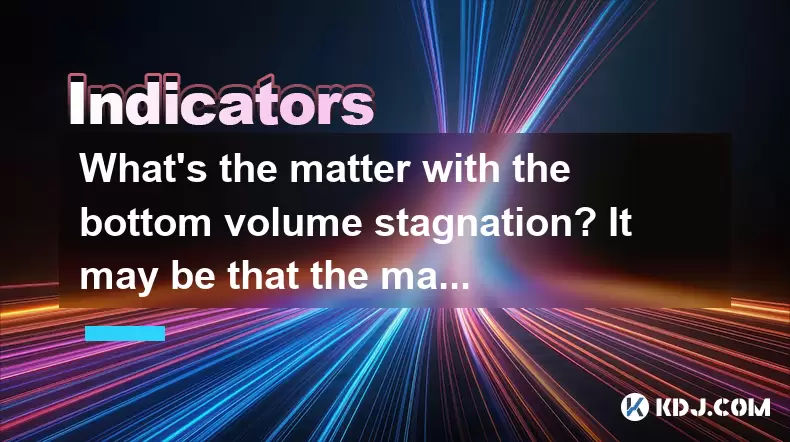
Understanding Bottom Volume Stagnation in Cryptocurrency Markets
In the cryptocurrency market, volume is a crucial indicator that reflects the level of interest and participation from traders. When the volume remains stagnant at the bottom of a price trend, it often raises concerns among investors and traders alike. This phenomenon, known as bottom volume stagnation, typically occurs after a significant price drop, where trading activity shows little to no increase despite the low price levels.
The key question here is: why would the market not show increased buying pressure when prices are attractive? One possible explanation lies in the behavior of large institutional players or "whales" who may be accumulating assets quietly without triggering noticeable spikes in trading volume.
Why Is Volume Important in Assessing Market Health?
Volume plays a pivotal role in technical analysis, especially in volatile markets like cryptocurrencies. A rising volume usually accompanies strong price movements, indicating genuine market sentiment. Conversely, low volume during price declines can suggest weak selling pressure, but it can also point to a lack of buyer confidence.
In a healthy downtrend reversal, one would expect to see increasing volume as buyers step in. However, stagnant volume at the bottom suggests that neither sellers nor buyers are aggressively participating. This could signal a period of consolidation or accumulation by major players who do not want to reveal their positions prematurely.
What Does It Mean When the Main Force Is Laying Out?
The term "main force" refers to large-scale investors or institutions with significant capital. These entities have the ability to influence market direction due to the sheer size of their trades. When they begin to accumulate positions without causing visible spikes in volume, it’s often referred to as stealth accumulation.
This strategy involves placing small, incremental buy orders over time to avoid detection. The goal is to acquire assets at lower prices without alerting retail traders who might then follow suit and drive up the price. In such scenarios, bottom volume stagnation becomes a sign of potential institutional buildup, rather than market weakness.
How Can You Identify Stealth Accumulation in Crypto Charts?
Detecting stealth accumulation requires careful observation of on-chain data and order book depth. Here are some signs that may indicate large players are laying out positions:
- Flat volume bars during prolonged downtrends
- Absence of panic selling even after negative news
- Sudden price bounces without corresponding volume surges
- Order book imbalances showing large hidden buy walls
Analyzing these patterns can help traders spot early signs of institutional involvement. Tools like Glassnode or Whale Alert provide insights into whale transactions and can assist in identifying accumulation zones.
Technical Indicators That May Confirm Institutional Activity
While volume alone isn’t sufficient to confirm stealth accumulation, combining it with other indicators can improve accuracy:
- On-Balance Volume (OBV): Tracks cumulative volume flow. Rising OBV during sideways price action may indicate underlying strength.
- Volume Weighted Average Price (VWAP): Large players often trade around VWAP levels to mask their activities.
- Order Flow Analysis: Watching for unusual bid-ask spreads or repeated rejections at certain price levels.
These tools don’t guarantee certainty but offer valuable clues when interpreted alongside broader market conditions.
Practical Steps to Monitor and Respond to Volume Stagnation
If you're an active trader or investor observing volume stagnation at the bottom, consider the following steps:
- Monitor on-chain metrics regularly using platforms like Glassnode or Santiment
- Track whale movements via alerts from services like Whale Alert or LookIntoBitcoin
- Set up alerts for sudden changes in volume or price spikes
- Avoid making impulsive decisions based solely on short-term volume trends
- Combine technical and fundamental analysis before entering or exiting positions
By adopting a multi-layered approach, you can better understand whether the volume stagnation is a sign of capitulation or a silent accumulation phase.
Frequently Asked Questions (FAQs)
Q: What is the difference between volume stagnation and low volume?
A: Volume stagnation implies that despite price movement or time passing, the total traded volume remains consistently flat. In contrast, low volume simply means fewer trades are occurring compared to average levels, which can happen in both trending and consolidating markets.
Q: How long can bottom volume stagnation last in crypto markets?
A: There's no fixed duration, as it depends on market psychology and external factors. Some periods last days, while others stretch into weeks. The key is to observe if price eventually breaks out with confirmed volume, signaling the end of accumulation.
Q: Can retail traders benefit from recognizing stealth accumulation?
A: Yes, but with caution. Recognizing institutional accumulation patterns allows retail traders to position themselves ahead of potential breakouts. However, timing entry points accurately is challenging and should be done with strict risk management.
Q: Should I buy when there's volume stagnation at the bottom?
A: Not necessarily. Volume stagnation alone isn't a reliable buy signal. It should be analyzed in conjunction with other indicators and fundamentals. Waiting for confirmation through a breakout or volume surge is generally safer.
Disclaimer:info@kdj.com
The information provided is not trading advice. kdj.com does not assume any responsibility for any investments made based on the information provided in this article. Cryptocurrencies are highly volatile and it is highly recommended that you invest with caution after thorough research!
If you believe that the content used on this website infringes your copyright, please contact us immediately (info@kdj.com) and we will delete it promptly.
- 2025-W Uncirculated American Gold Eagle and Dr. Vera Rubin Quarter Mark New Products
- 2025-06-13 06:25:13
- Ruvi AI (RVU) Leverages Blockchain and Artificial Intelligence to Disrupt Marketing, Entertainment, and Finance
- 2025-06-13 07:05:12
- H100 Group AB Raises 101 Million SEK (Approximately $10.6 Million) to Bolster Bitcoin Reserves
- 2025-06-13 06:25:13
- Galaxy Digital CEO Mike Novogratz Says Bitcoin Will Replace Gold and Go to $1,000,000
- 2025-06-13 06:45:13
- Trust Wallet Token (TWT) Price Drops 5.7% as RWA Integration Plans Ignite Excitement
- 2025-06-13 06:45:13
- Ethereum (ETH) Is in the Second Phase of a Three-Stage Market Cycle
- 2025-06-13 07:25:13
Related knowledge
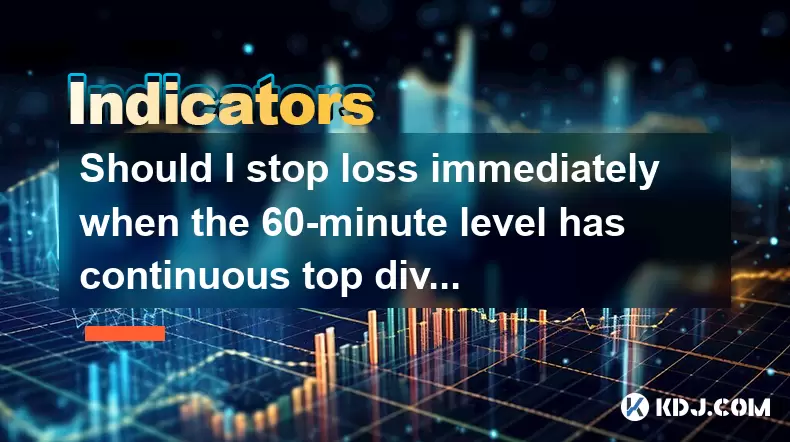
Should I stop loss immediately when the 60-minute level has continuous top divergence?
Jun 17,2025 at 05:28pm
Understanding Top Divergence in the 60-Minute ChartIn cryptocurrency trading, top divergence refers to a technical signal where the price of an asset makes higher highs while the indicator (often RSI or MACD) makes lower lows. This is commonly interpreted as a sign of weakening momentum and potential reversal. When this occurs on the 60-minute chart, it...
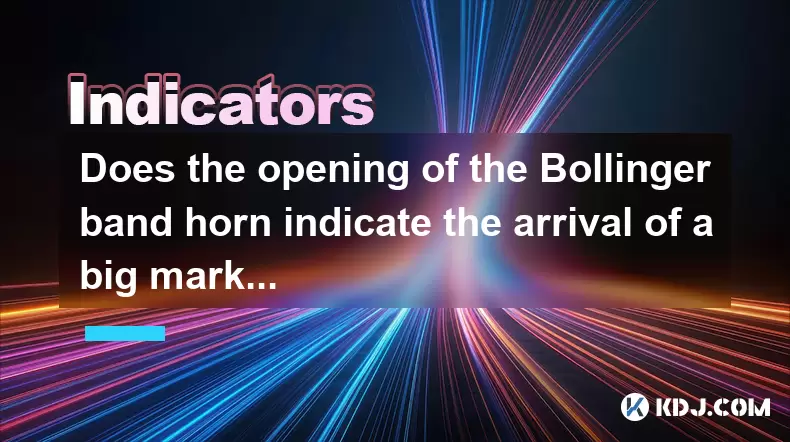
Does the opening of the Bollinger band horn indicate the arrival of a big market?
Jun 17,2025 at 06:28pm
Understanding the Bollinger Bands and Their StructureBollinger Bands are a widely used technical analysis tool in the cryptocurrency market, developed by John Bollinger. They consist of three lines: a simple moving average (SMA), typically set at 20 periods, and two standard deviation bands above and below this SMA. These bands dynamically expand and co...
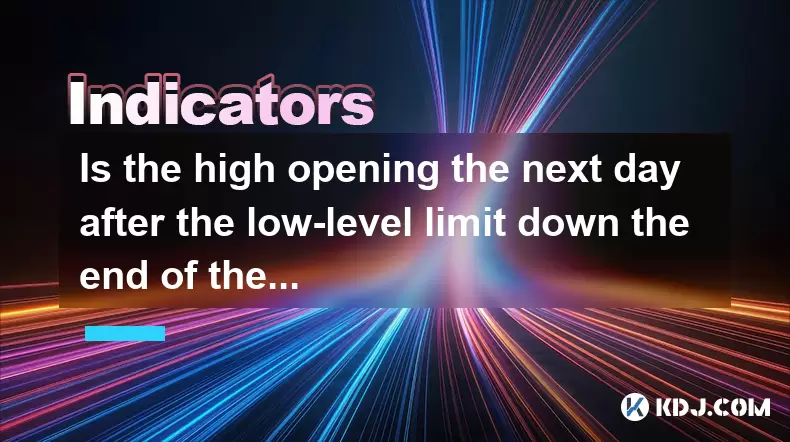
Is the high opening the next day after the low-level limit down the end of the wash?
Jun 17,2025 at 05:57pm
Understanding the Concept of a Limit Down and Its ImplicationsIn the world of cryptocurrency trading, a limit down refers to a situation where the price of a digital asset drops sharply, reaching its maximum allowable decline within a specific time frame. This mechanism is often seen on exchanges that implement daily price limits to prevent excessive vo...
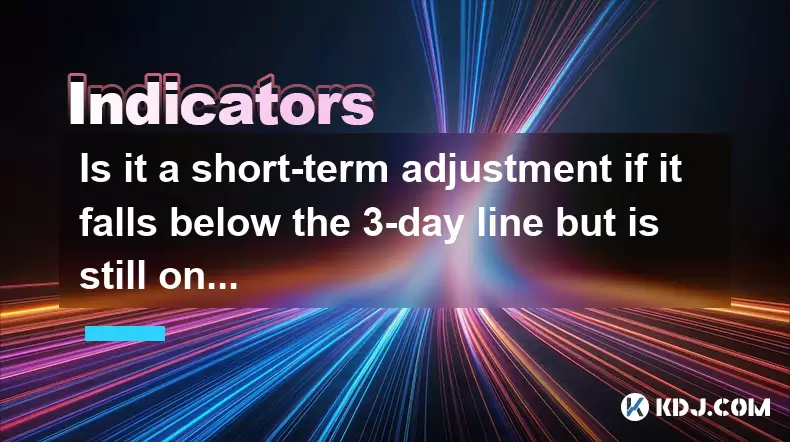
Is it a short-term adjustment if it falls below the 3-day line but is still on the 10-day line?
Jun 17,2025 at 04:07pm
Understanding the 3-Day and 10-Day Moving AveragesIn cryptocurrency trading, moving averages are essential tools for gauging trend strength and potential reversals. The 3-day moving average is a short-term indicator that reflects recent price action with minimal lag, making it highly sensitive to sudden market shifts. In contrast, the 10-day moving aver...
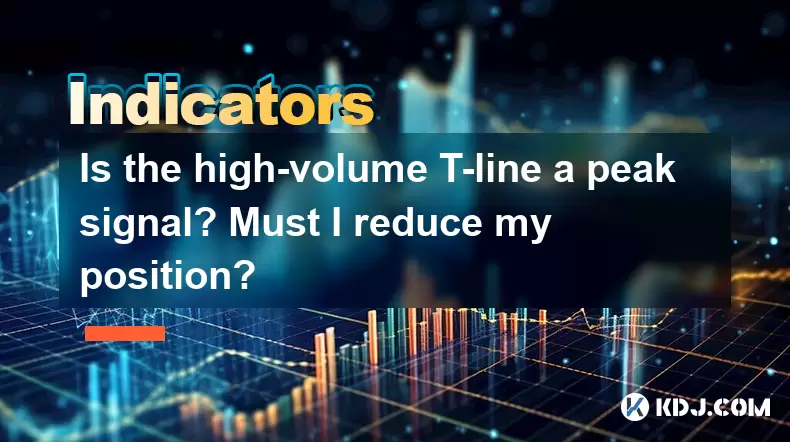
Is the high-volume T-line a peak signal? Must I reduce my position?
Jun 17,2025 at 06:07pm
Understanding the T-Line Pattern in Cryptocurrency TradingIn cryptocurrency trading, technical patterns are frequently used by traders to anticipate price movements. One such pattern is the T-line, which appears on candlestick charts and is characterized by a long upper or lower shadow with little or no body. A high-volume T-line occurs when this patter...
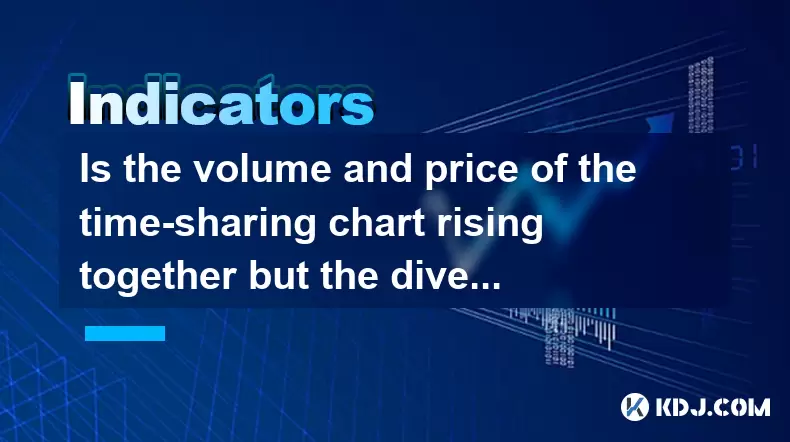
Is the volume and price of the time-sharing chart rising together but the dive at the end of the trading day a lure to buy more? Should I run?
Jun 17,2025 at 07:28pm
Understanding the Time-Sharing Chart DynamicsIn cryptocurrency trading, time-sharing charts are essential tools for short-term traders. These charts show real-time price movements along with trading volume over a specific period, usually within a day. When you observe that both price and volume rise together, it typically signals strong buying pressure ...

Should I stop loss immediately when the 60-minute level has continuous top divergence?
Jun 17,2025 at 05:28pm
Understanding Top Divergence in the 60-Minute ChartIn cryptocurrency trading, top divergence refers to a technical signal where the price of an asset makes higher highs while the indicator (often RSI or MACD) makes lower lows. This is commonly interpreted as a sign of weakening momentum and potential reversal. When this occurs on the 60-minute chart, it...

Does the opening of the Bollinger band horn indicate the arrival of a big market?
Jun 17,2025 at 06:28pm
Understanding the Bollinger Bands and Their StructureBollinger Bands are a widely used technical analysis tool in the cryptocurrency market, developed by John Bollinger. They consist of three lines: a simple moving average (SMA), typically set at 20 periods, and two standard deviation bands above and below this SMA. These bands dynamically expand and co...

Is the high opening the next day after the low-level limit down the end of the wash?
Jun 17,2025 at 05:57pm
Understanding the Concept of a Limit Down and Its ImplicationsIn the world of cryptocurrency trading, a limit down refers to a situation where the price of a digital asset drops sharply, reaching its maximum allowable decline within a specific time frame. This mechanism is often seen on exchanges that implement daily price limits to prevent excessive vo...

Is it a short-term adjustment if it falls below the 3-day line but is still on the 10-day line?
Jun 17,2025 at 04:07pm
Understanding the 3-Day and 10-Day Moving AveragesIn cryptocurrency trading, moving averages are essential tools for gauging trend strength and potential reversals. The 3-day moving average is a short-term indicator that reflects recent price action with minimal lag, making it highly sensitive to sudden market shifts. In contrast, the 10-day moving aver...

Is the high-volume T-line a peak signal? Must I reduce my position?
Jun 17,2025 at 06:07pm
Understanding the T-Line Pattern in Cryptocurrency TradingIn cryptocurrency trading, technical patterns are frequently used by traders to anticipate price movements. One such pattern is the T-line, which appears on candlestick charts and is characterized by a long upper or lower shadow with little or no body. A high-volume T-line occurs when this patter...

Is the volume and price of the time-sharing chart rising together but the dive at the end of the trading day a lure to buy more? Should I run?
Jun 17,2025 at 07:28pm
Understanding the Time-Sharing Chart DynamicsIn cryptocurrency trading, time-sharing charts are essential tools for short-term traders. These charts show real-time price movements along with trading volume over a specific period, usually within a day. When you observe that both price and volume rise together, it typically signals strong buying pressure ...
See all articles

























































































